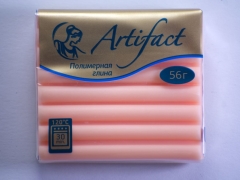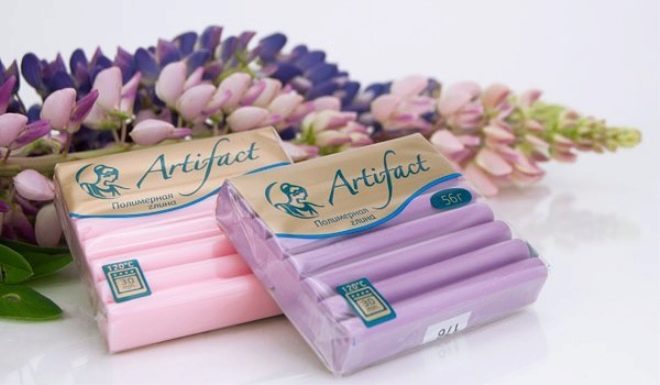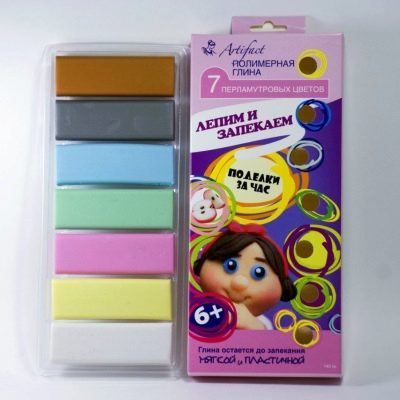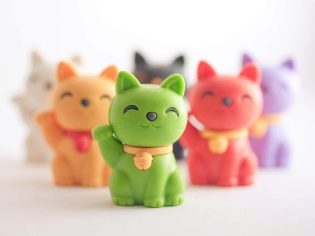Polymer clay "Artefact"
Polymer clay is one of the most popular and sought after materials of our time. It can successfully replace many other, more traditional materials, since it is not inferior to them in decorative characteristics. High demand contributed to the fact that manufacturers began to produce a huge number of varieties of polymer clay.
A large assortment at the same time allows you to find the most suitable option, and makes you get lost among dozens of options, since it is extremely difficult to make a choice. Among domestic baked clays, Artefact clay is very popular, so you should know what it is.
About the manufacturer
This manufacturer exists not so long ago (the company was founded in 2000), however, the foundation time coincides with the appearance on the market of polymer clay, in the production of which the company specializes. For a relatively short period of its existence, the company managed to establish itself as a bona fide manufacturer, and today its products are in high demand among creative people not only in Russia, but also abroad.
Manufacturer of clay "Artefact" produces several series: "Sonnet", "Lapsi", "Flower" and the artifact line of the same name. A big plus is the widest range of products offered. The palette consists of 106 different variants (meaning not only classic colors, but also shades of different depth and transparency). Also presented are interesting fluorescent collections, clay with sparkles.
For the convenience of the masters, clay for manual molding is sold both in sets and individually - in bars weighing 56 or 250 grams.
Raw Properties
Reviews of people who have been involved in modeling for a long time and understand this indicate that such material is good enough in its characteristics. There is a soft texture. No significant effort is required to stretch the material, but it does not spread after prolonged kneading. Clay has excellent adhesive properties, which is both a plus and a minus.
Material well amenable to modeling, but he can get his hands dirty, and this should be ready. There are no large particles in the clay, which makes it easy to cut into bars of suitable size.
It is indicated that the dye is well mixed into the clay: there is no uneven shade, no large undissolved pigment grains. This affects the appearance of finished crafts positively. "Artifact" can be very successfully used for the manufacture of small parts, since such polymer clay is perfectly rolled into a thin layer, keeping its shape and preserving its integrity. The resulting raw crafts can stretch. This characteristic is not inherent in all types of such raw materials.
Baked properties
In fact, for professionals, comfort when working with raw clay is not as important as the end result of this work. It is worth noting that this clay is suitable for creating a variety of decorative elements, including such complex as flowers.
Appearance is quite typical for typical baked clays. In particular, the color darkens a little, and in translucent varieties in the baked form, the property of limited light transmission is manifested. From atypical features can be noted appearance of light whitish plaquethat can spoil the impression of the finished product.A similar effect may also be caused by an increase in the surface roughness, which, however, may be caused by minor deviations from the instructions in the baking process.
Baked products possess relative elasticity. In particular, the petals made for the sake of experiment bend and unbend without any structural disturbances, returning to their original appearance. By the way, its thickness can also directly affect the elasticity of a product. Many indicate that the thinnest petals bend and straighten without any problems, but the thicker parts behave like an eraser, and under strong pressure they simply break.
Should I buy?
It should be noted that, in general, the feedback on this material is positive.
But there are also negative reviews, based on the results of reading which the reader will surely lose the desire to get acquainted with such raw materials. Writing such authors is also very skilled, which excludes the option of amateurishness or improper use. In particular, it is recommended to bake only the wet clay manufacturer Artefact.
They complain that finished products will surely change their color after a certain time: either they will fade or fade, and it is impossible to say in advance when and how exactly this will happen. Moreover, in a baked product, darker parts may stain adjacent light ones over time. At the same time, even the cost, which is usually evaluated as very democratic, is strongly criticized.
Some users believe that such quality is not worth the money, but everything is relative. It is worth trying to form your own opinion about this material.
For information on how to work with clay "Artifact", see the following video.























